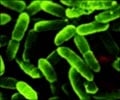New source of the botulinum neurotoxin (Botox) has been identified in a strain of animal gut bacteria known as Enterococcus faecium.

‘Botox is commonly used to treat muscular conditions, migraine, and cosmetically to remove wrinkles. Finding a new source of Botox may enable an expansion in its therapeutic usage.’





Over the past 20 years, there has also been a growing number of therapeutic applications for botulinum toxin type A, known as Botox, including treatment for migraines, leaky bladders, excessive sweating, and cardiac conditions."This is the first time that an active botulinum toxin has been identified outside of Clostridium botulinum and its relatives, which are often found in soil and untreated water," said Andrew Doxey, one of the study's two corresponding authors and a bioinformatics professor at the University of Waterloo. "Its discovery has implications in several fields, from monitoring the emergence of new pathogens to the development of new protein therapeutics, it's a game changer."
Doxey's findings were developed in collaboration with researchers from Harvard University and the Boston Children's Hospital.
In the study, originally designed to investigate the origins of antibiotic resistance in E. faecium bacteria, the researchers were able to sequence the genome of the E. faecium bacteria drawn from cow feces. The genome was then run through computer programs in Doxey's lab, which found the gene for botulinum toxin in the bacterial strain.
The research team concluded that the botulinum toxin was likely transferred from C. botulinum bacteria in the environment into the E. faecium bacteria in the cow's gut, showing that the toxin can be transferred between very different species.
Advertisement
Source-Eurekalert















